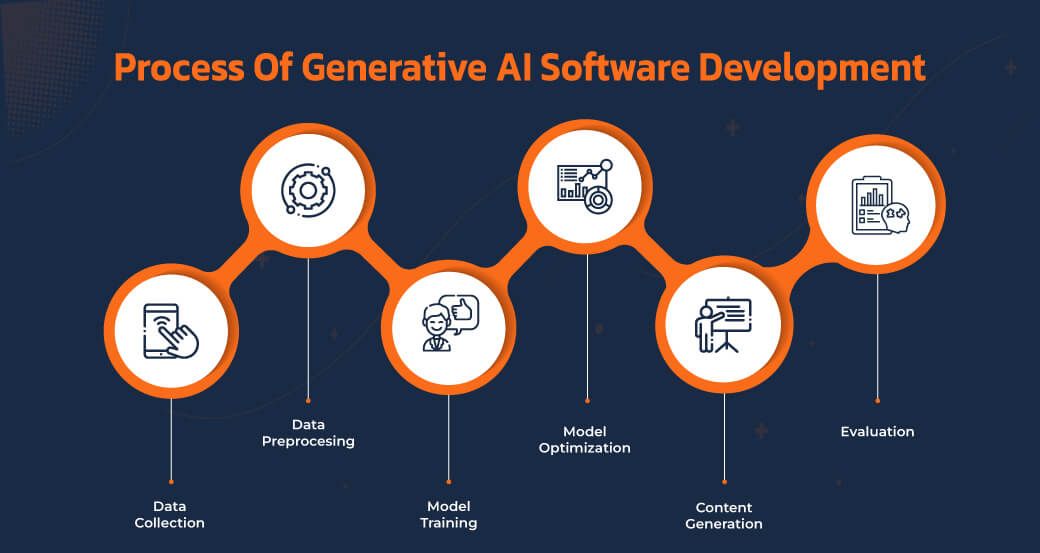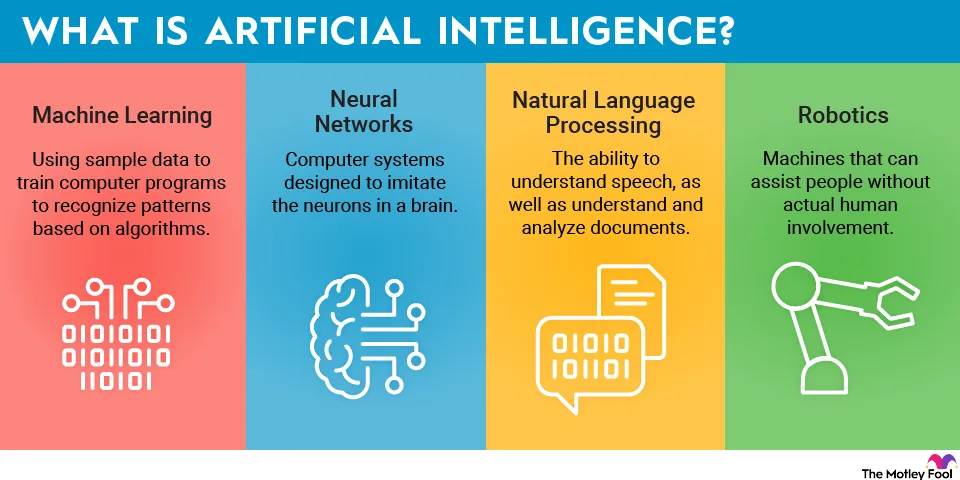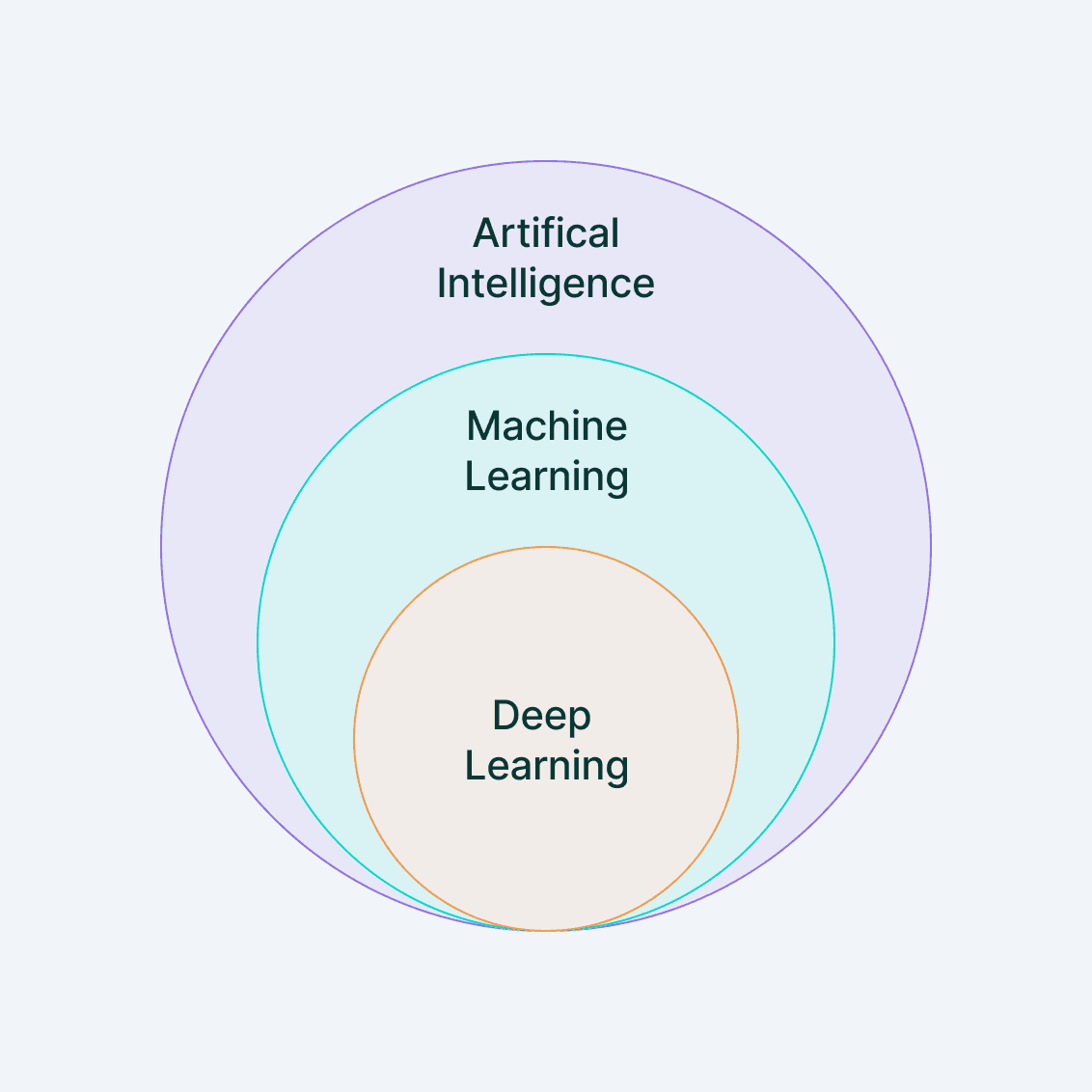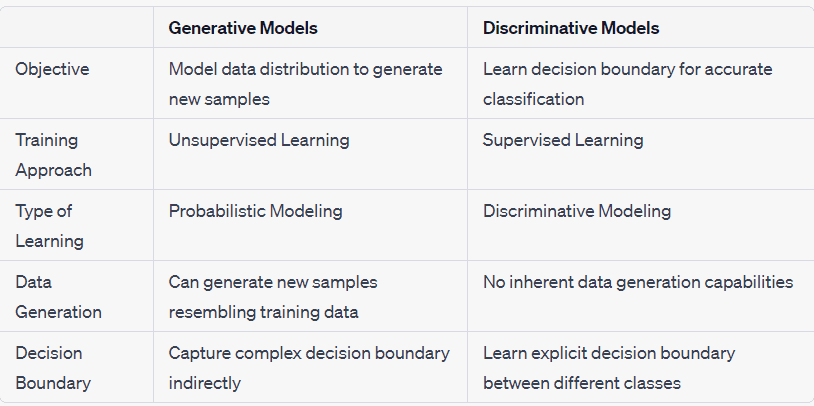Have you ever wondered how AI creates music, art, and literature? Generative AI is the futuristic technology behind this machine creativity.
This comprehensive guide will lead you through everything you need to start building advanced generative AI models, from understanding the basics to gathering data and training models.
Follow a simple step-by-step walkthrough to implement your first model. Learn about popular frameworks, evaluation techniques, and best practices along the way.
Whether you're a seasoned developer or just getting started, this guide breaks down the complex world of generative AI in simple terms anyone can understand.
Satisfy your inner curiosity and unlock new creative potential with this accessible intro to the code behind computational creativity.
Let's start at the very beginning and build towards awe-inspiring results together.
Basics of Generative AI Development

Artificial intelligence (AI), machine learning, and deep learning are commonly used in generative AI development.
It's essential to understand their definitions and distinctions to grasp the fundamentals of this technology.
Artificial Intelligence

Artificial Intelligence is the simulation of human intelligence in machines that are programmed to think and learn like humans.
Generative AI development tools enable machines to perform tasks that typically require human intelligence, such as speech recognition, problem-solving, and decision-making.
Machine Learning

Machine Learning is a subset of AI that focuses on developing algorithms that learn from and make predictions or decisions based on data.
It empowers machines to learn patterns, recognize trends, and improve performance without explicitly programmed instructions.
Deep Learning
Deep Learning is a specialized form of machine learning that employs artificial neural networks to mimic how the human brain works.
These neural networks consist of layers of interconnected nodes that process and interpret complex patterns and data representations, leading to high-level abstractions and accurate predictions.
Generative vs. Discriminative Models

In generative AI, the goal is to create models that generate new data similar to the input data distribution. Generative models learn the underlying data distribution and can generate new samples that resemble the original dataset.
On the other hand, discriminative models aim to classify or distinguish between different classes or categories. They focus on learning the boundaries between classes to make accurate predictions.
Generative models are versatile and useful for tasks such as image generation, text synthesis, and music composition. Discriminative models excel in tasks like object recognition, sentiment analysis, and speech recognition.
Popular Generative AI Frameworks and Libraries
To simplify and expedite the generative AI development process, several frameworks and libraries that support generative AI have been created. These tools provide pre-built functionalities and structures that enable developers to build robust generative models.
Some popular generative AI frameworks and libraries include the following:
TensorFlow: A widely-used open-source platform that provides a comprehensive ecosystem for building and deploying machine learning models, including generative models.
PyTorch: An open-source deep learning library known for its dynamic computation graph and user-friendly interface, making it suitable for generative AI development tools.
Keras: A higher-level neural network API that runs on top of TensorFlow, enabling faster prototyping and easy experimentation with generative models.
GANs (Generative Adversarial Networks): A framework that uses a combination of generative and discriminative models to generate new data samples. GANs have gained significant popularity in generative AI research.
Familiarizing yourself with these frameworks and libraries will provide a solid foundation for implementing generative AI development tools in your environment.
After understanding basics of Generative AI Development tools, let us move on to setting up the environment of necessary tools.
Setting Up Your Environment
Before diving into generative AI development, it's crucial to set up your environment with the necessary software and tools.
The following step-by-step instructions will guide you through the setup process.
Installing Necessary Software and Tools
Choose a Python distribution: Start by installing a Python distribution such as Anaconda, which includes popular libraries required for generative AI development.
Install the chosen framework: Depending on your preferences, install TensorFlow, PyTorch, or Keras by following the respective official installation guides for your operating system.
Set up Jupyter Notebook: Jupyter Notebook is a popular interactive coding environment. Install it using the preferred package manager (e.g., pip or conda).
Recommended Hardware Requirements
Efficient generative AI development tools may require suitable hardware resources. Here are some recommendations to ensure smooth execution:
CPU: A multi-core CPU is necessary, preferably with at least four cores to handle complex computations effectively.
GPU: A powerful Graphics Processing Unit (GPU) accelerates model training significantly. Consider NVIDIA GPUs as the popular generative AI frameworks widely support them.
RAM: Aim for a minimum of 8GB RAM, but higher specifications are preferable for handling large datasets and computationally intensive tasks.
Storage: Sufficient storage space is required to store datasets, models, and experimental output. Opt for high-capacity drives such as SSDs or external hard drives.
Following these hardware requirements will ensure a smooth and efficient generative AI development process.
With a solid understanding of the basics and a properly set up development environment, you are ready to learn deeper into generative AI and start exploring the power of machine creativity.
Next, we will cover how to gather and prepare data for Generative AI Development.
Suggested Reading:
Gathering and Preparing Data
High-quality data is crucial for successful generative AI development tools. In this section, we will explore the significance of data quality, techniques for data collection and cleaning, and the ethical considerations involved.
Significance of High-Quality Data
High-quality data forms the foundation of any generative AI model. It directly impacts the model's ability to learn patterns and generate meaningful outputs.
Generating reliable and diverse data ensures that the resulting models are accurate, robust, and representative of the real-world scenarios they aim to mimic.
Techniques for Data Collection and Cleaning
Data collection involves obtaining relevant and diverse datasets that align with the generative AI task.
Some techniques for effective data collection include the following:
Scraping: Extract data from various sources, such as websites and APIs, using web scraping techniques. Ensure compliance with legal and ethical considerations when scraping data.
Crowd-Sourcing: Engage the crowd to collect labeled or annotated data, using platforms like Amazon Mechanical Turk or specific domain-specific platforms.
Pre-Existing Datasets: Utilize publicly available datasets, such as those provided by research institutions or open data initiatives, after ensuring they are appropriate for your task.
Once the data is collected, it is essential to clean and preprocess it before using it for training. Common data cleaning techniques include:
Removing Noise: Eliminating irrelevant or incorrect data points that could negatively impact model performance.
Handling Missing Values: Addressing missing values by imputing or excluding them based on the specific task and dataset characteristics.
Normalization and Scaling: Transforming data to a common scale to avoid undue influence of variables with larger ranges.
Ethical Considerations
Using data for generative AI development tools necessitates ethical considerations to ensure fair and responsible development. Some key ethical considerations include:
Data Privacy: Respect individuals' privacy rights and ensure compliance with relevant data protection regulations when gathering and using personal data.
Bias Mitigation: Be aware of and actively address biases in the collected data to prevent biased outputs from the generative AI models.
Informed Consent: Obtain necessary permissions and consent from data sources or subjects when collecting and using data, especially when dealing with sensitive or personal information.
Transparency and Explainability: Strive for transparency in data usage and model outputs, enabling better understanding and accountability.
Considering these ethical considerations helps create responsible and trustworthy generative AI development tools.
Next, we will cover how to choose the right Generative AI approach.
Suggested Reading:
Choosing the Right Generative AI Approach
With an understanding of data preparation, it's time to explore different generative AI approaches and determine the most suitable one for specific applications.
This section will present various types of generative AI models, discuss their strengths and limitations, and provide guidance on selecting the appropriate approach.
Types of Generative AI Models
GANs (Generative Adversarial Networks): GANs consist of two components— a generator and a discriminator. The generator generates samples, while the discriminator aims to distinguish between real and generated samples. GANs have gained significant attention for their ability to generate realistic and diverse outputs.
VAEs (Variational Autoencoders): VAEs are generative models that learn a compact latent representation of data. They allow for probabilistic generation of new samples. VAEs are suitable for tasks where reconstruction accuracy and interpolation between data points are crucial.
Autoregressive Models: Autoregressive models generate sequences of outputs by modeling the conditional probability of each output given the previous ones. This approach is suitable for tasks involving sequences, such as text generation or music composition.
Strengths and Limitations
Each generative AI approach has its strengths and limitations:
GANs excel in generating diverse and realistic outputs but may suffer from mode collapse or instability during training.
VAEs provide more control over the generative process and can learn meaningful latent representations but may struggle to generate highly detailed outputs.
Autoregressive models produce coherent and high-quality sequence outputs but can be computationally expensive for longer sequences.
Selecting the Right Approach
Choosing the most appropriate generative AI approach depends on the specific application and desired outputs. Consider the following factors when making a selection:
Task Requirements: Evaluate the task's nature and objectives—for example, image synthesis, text generation, or music composition.
Data Availability: Determine the availability and suitability of the data for training different generative AI models.
Performance Considerations: Assess computational resources and time constraints for training and inferencing the selected approach.
By carefully considering these factors, you can make an informed decision and choose the right generative AI development tools approach for your specific needs.
Implementing Your First Generative AI Model
Generative AI models have been gaining popularity in recent years due to their ability to create new content such as images, music, and text. In this section, we will walk you through the process of building a simple generative AI model, highlight the importance of experimentation, and provide code examples along the way.
Building a Simple Generative AI Model
Define the problem: First, you need to define the problem you would like to solve. For instance, let's say you would like to generate random text.
Gather and prepare data: Next, you need to gather a text dataset suitable for training your model. You can obtain text from various sources such as books, articles, and web pages. Ensure all data collected are relevant and diverse. Preprocess the data by cleaning and formatting it.
Choose a model architecture: Depending on the problem, there are different types of generative AI models with various architectures to choose from. One example to consider is the Long-Short-Term Memory (LSTM) network.
Implement the model: You can use a machine learning library like Keras or TensorFlow to implement the model. First, define the architecture of your model, then compile and train it using your preprocessed data.
Generate new content: Once your model has been trained, you can generate new text by inputting a seed text, then allowing the model to generate new text based on the patterns it has learned from the training data.
Experimentation and Iteration
It is crucial to experiment and iterate when building generative AI models. The first model you build will most likely not be perfect, and that's okay.
It's important to experiment with different model architectures, data preprocessing techniques, and hyperparameters to find the best possible solution.
With each iteration, record the results and try to understand why certain methods work better than others.
Suggested Reading:
Training and Evaluating Your Model
In this section, we will describe the concept of training data and validation data, guide you on how to train generative AI development tools effectively, and discuss the evaluation metrics and techniques used to measure model performance.
Training Data and Validation Data
Training data is the data used to train the model, while validation data is used to measure the model's performance during training. It is essential to have a balanced dataset with a sufficient amount of data to avoid overfitting.
One way to ensure a balanced dataset is to use techniques such as data augmentation and resampling. Data augmentation involves creating new data from the original data, while resampling involves adjusting the dataset's class balance by oversampling or undersampling.
Training Generative AI Models Effectively
There are several best practices to follow when training generative AI models:
Use GPUs: GPUs can significantly speed up the training process, allowing you to iterate through models faster.
Define clear objectives: Define clear objectives and key performance indicators (KPIs) before starting the training process.
Use early stopping: Early stopping is a technique used to prevent overfitting by stopping the training process when the model's performance has plateaued.
Regularize the model: Regularization is a technique used to avoid overfitting by adding constraints to the model's optimization.
Evaluation Metrics and Techniques
There are various evaluation metrics and techniques used to measure the performance of generative AI development tools. Some commonly used metrics include:
Perplexity: A metric used to evaluate the quality of the language model.
FID Score: A metric used to measure the similarity between the generated and real data distributions.
Precision and Recall: Metrics used to evaluate the quality of generated text.
These evaluations help to determine if the model is meeting the objectives and KPIs defined, and to identify areas for improvement.
Conclusion
And that wraps up our guide to getting started with generative AI!
By now, you should have a solid grasp of the fundamentals, generative AI development tools, and best practices to start building your own models.
The world of artificial creativity is wide open for exploration. Why not give your imagination a boost by trying out BotPenguin?
Our intuitive chatbot builder makes it easy for anyone to create conversational agents powered by generative AI.
With flexible pricing and deployment options, you can bring your synthetically creative ideas to life at scale.
Don't just read about machine learning - start creating with it today using BotPenguin's generative chatbots!
Because when it comes to doing Generative AI the easy way, BotPenguin allows users to integrate some of the prominent language models like GPT 4, Google PaLM, and Anthropic Claude to create Generative AI-powered chatbots (without any coding skill required) for platforms like:
- WhatsApp Chatbot
- Facebook Chatbot
- WordPress Chatbot
- Telegram Chatbot
- Website Chatbot
- Squarespace Chatbot
- woocommerce Chatbot
- Instagram Chatbot
The future is what we make it - now is the time to get building. Try BotPenguin!
Frequently Asked Questions (FAQs)
What are the fundamental prerequisites for starting with generative AI development?
To begin with generative AI development tools, ensure a solid foundation in programming, particularly Python, and grasp key concepts in machine learning. Familiarity with frameworks like TensorFlow or PyTorch is beneficial for a smoother start.
What resources are recommended for learning the basics of generative AI?
Recommended resources include online courses like Coursera's "Generative AI with TensorFlow" and books like "Generative Deep Learning" by David Foster, providing comprehensive insights for beginners.
How do I set up my development environment for generative AI projects?
Set up a Python environment with essential libraries like TensorFlow or PyTorch. Platforms like Jupyter Notebooks or Google Colab can facilitate coding and experimentation in a user-friendly environment.
Are there specific programming languages tailored for generative AI development?
Python is widely used for generative AI development tools due to its extensive libraries and frameworks. TensorFlow and PyTorch, both Python-based, are popular choices for implementing generative models effectively.
What are some introductory projects for practicing generative AI development?
Start with projects like image generation using Generative Adversarial Networks (GANs) or text generation with recurrent neural networks. These hands-on projects enhance understanding and skill development.

